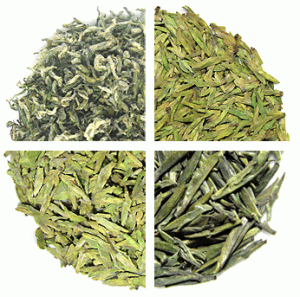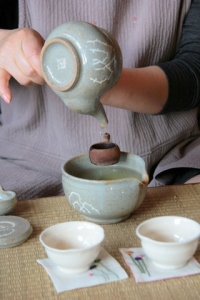We hear a lot of this and that about green tea from our customers. Most are thrilled to have discovered this lovely category of sweet, fragrant tea while others find it bitter and astringent or just plain unpleasant. Sometimes there are foods and drink that just do not agree with us and that is that – like a bad first date that is just not meant to be. But other times we wonder if the technique used to steep green tea is going unchecked or if someone was using just plain old or bad tea.

So, in advance of the new 2016 green tea season which will begin in China at the end of March (4 weeks away), followed by harvests from Japan and Korea as the weather warms in May , let us share some thoughts about how to obtain the best flavor from your green tea. We have found over the years that many tea enthusiasts who think that they do not like green tea actually do, once their steeping technique is adjusted to fit the needs of this fresh, clean leaf.

1. Start with good, premium grade loose-leaf tea. Supermarket tea will just not deliver good taste and neither will teabag tea (no matter how fancy the teabag or how much you paid for them). There is a reason why most commercial green tea is flavored, and it is almost always to distract from how low-quality the base tea is.

2. Buy fresh tea. Try to purchase green tea that is sold with a current harvest date, not an expiration date. Green tea is especially perishable, so if the tea is more than 1-year old or has no harvest date listed, pass on it and purchase tea from a vendor that sells tea from the current year’s spring season. Old tea will lack flavor and aroma and be unsatisfying or worse, harsh and bitter.

3. Beware of other aromas fouling your tea. Tea leaves can easily pick up other aromas, so beware when purchasing tea from spice shops or other stores in which there are strong competing aromas in the air. Ditto for storing your green tea – do so away from other aromas in your pantry or kitchen cabinet.

4. Do not refrigerate or freeze your tea. Cold, humid air can affect the moisture content of the leaf and yield strange flavors. Keep your green tea dry and in a clean container.
NOTE: some Japanese tea drinkers refrigerate their sencha and matcha, but they do so very carefully in airtight metal containers that do not allow for moisture exchange. If you choose to follow this storage practice, do so meticulously.

5. Use enough leaf. We recommend using 2-3 grams of leaf tea for every 6-ounces of your tea-steeping vessel’s capacity. Green tea has tremendous variation in leaf size (from 1.5 inches long to very tiny) and also comes in many shapes and and densities (from curls to flat to fluffy). So it becomes difficult to measure many green teas by the teaspoon, tablespoon, etc. Use an inexpensive gram scale if you seriously want to have consistent results and get the right amount of leaf in the cup. ‘Eyeballing it’ produces results that will be successful 50-50 at best. Seriously.

6. Know your water. Good water will allow the bright flavors of your tea to shine in all its complexity – bad water will dull the flavor and flatten out the taste. Lu Yu, the Tang dynasty author of The Classic of Tea said that water drawn from the center of a flowing mountain stream is best.Since that is not possible for most of us, tap water is often the default water for steeping tea. But is your tap water soft or hard? Hard water contains a high percentage of calcium and magnesium and other salts that may overwhelm the taste and subtlety of green tea. Soft water is the opposite – it contains very few minerals. Taste-wise, soft water is generally preferred for tea steeping. But the best for tea steeping is to use sweet tasting, slightly neutral water, which is easily obtained by purchasing bottled spring water in the supermarket. Avoid mineral water and distilled water.

7. Use short steeps. Green teas are sweetest and most elegant when they are steeped for 1-2 minutes; longer than that in the water only encourages bitterness in the cup. You will also gain the opportunity to re-steep most green tea one or two additional times if you steep this way. Much of the joy for Asian tea drinkers is observing how the tea changes in taste and character on each re-steeping.


Very helpful! I’ve heard many of this in passing, but it’s nice to have it all in once place for easy readability, and as a resource to point others to.